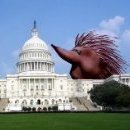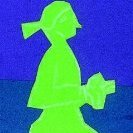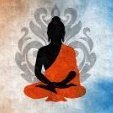-
Recently Browsing 0 members
- No registered users viewing this page.
-
Topics
-
-
Popular Contributors
-
-
Latest posts...
-
18
Trump Goes Off On His Own MAGA Base: 'I Don’t Want Their Support Anymore!'
It's not surprising! As Trump said, they are "weaklings"! 🤣 -
43
Inside the Vaccine Trials > testimonials by vaccine trial volunteers
Smallpox has been eradicated. Polio no longer terrorizes parents. Most of the recurring diseases are the result of vaccine hesitancy, promoted endlessly on social media by anti-vaxxers. You think a guy like Dr. John Campbell is on YouTube out of altruism? He's making money on the number of hits he gets from people who like being told what they want to hear. Instead of asking what could go wrong, a better question is why people like you insist on throwing the baby out with the bath water. -
43
Inside the Vaccine Trials > testimonials by vaccine trial volunteers
Imho, volunteering for vaccine trials is about the dumbest thing a person could do. Morons. -
42
THAILAND LIVE Thailand Live Thursday 17 July 2025
Thailand Scrambles to Tackle Escalating Border Tensions Photo of Cambodian police and soldiers looking across the border at Chong Chom courtesy of Bangkok Post Thailand is facing heightened border tensions, prompting Senator Sawat Thatsana to urge the Senate to establish a dedicated committee to address the growing security crisis. He emphasised the need for immediate action due to a surge in border incursions, unresolved territorial disputes, and ongoing unrest in the southern regions. Full Story: https://aseannow.com/topic/1367013-thailand-scrambles-to-tackle-escalating-border-tensions/ -
0
Report Thailand Scrambles to Tackle Escalating Border Tensions
Photo of Cambodian police and soldiers looking across the border at Chong Chom courtesy of Bangkok Post Thailand is facing heightened border tensions, prompting Senator Sawat Thatsana to urge the Senate to establish a dedicated committee to address the growing security crisis. He emphasised the need for immediate action due to a surge in border incursions, unresolved territorial disputes, and ongoing unrest in the southern regions. Yesterday, Sawat identified several urgent flashpoints. These include incursions by Myanmar’s United Wa State Army — also known as the Red Wa Army — territorial disputes with Cambodia near the volatile Chong Bok area, and continuous unrest in Thailand’s three southern provinces. Highlighting the ease with which criminals exploit Thailand’s porous borders to evade capture, Sawat stressed, “These are not isolated incidents. They reflect complex, layered issues that span economic development, politics, culture, human rights, and historical tensions.” Sawat proposes that the Senate committee should develop recommendations to strengthen border defences, improve regional diplomacy, and promote lasting peace. The goal is to ensure that policies address the interconnected challenges faced by the country's border zones. “The Senate must be proactive in addressing these threats. It’s not just about defence — it’s about building trust, safeguarding communities, and ensuring our borders are secure from infiltration and instability,” Sawat asserted. His proposal will be formally presented to the Senate today, with a decision on the committee's formation expected within the next 90 days. This initiative comes as concerns mount over the potential escalation of Thailand’s border issues without a centralised body for crafting cross-sector solutions. While various government agencies manage different aspects of border affairs, there is currently no overarching committee to coordinate strategy and cohesive action. If approved, this new Senate body could play a pivotal role in shaping Thailand’s national security agenda and its delicate relationships with neighbouring countries, ultimately aiming for stability and peace. Adapted by ASEAN Now from The Thaiger 2025-07-17 -
2
Crime American Man Arrested at Phuket Airport for Smuggling 6 kg of Heroin
With a stopover here? DOH: Hamad International Airport, Doha, Qatar Both Thailand and Qatar have death penalties for drug trafficking although life in prison are more likely. Dude probably would be better off taking the lethal injection. Back in 2002 that drug bust would have gotten the dude 15 rounds in the back via a Heckler-Koch machine gun. Thailand has become much more compassionate with drug smugglers.
-
-
Popular in The Pub



.thumb.jpeg.d2d19a66404642fd9ff62d6262fd153e.jpeg)








Recommended Posts
Create an account or sign in to comment
You need to be a member in order to leave a comment
Create an account
Sign up for a new account in our community. It's easy!
Register a new accountSign in
Already have an account? Sign in here.
Sign In Now